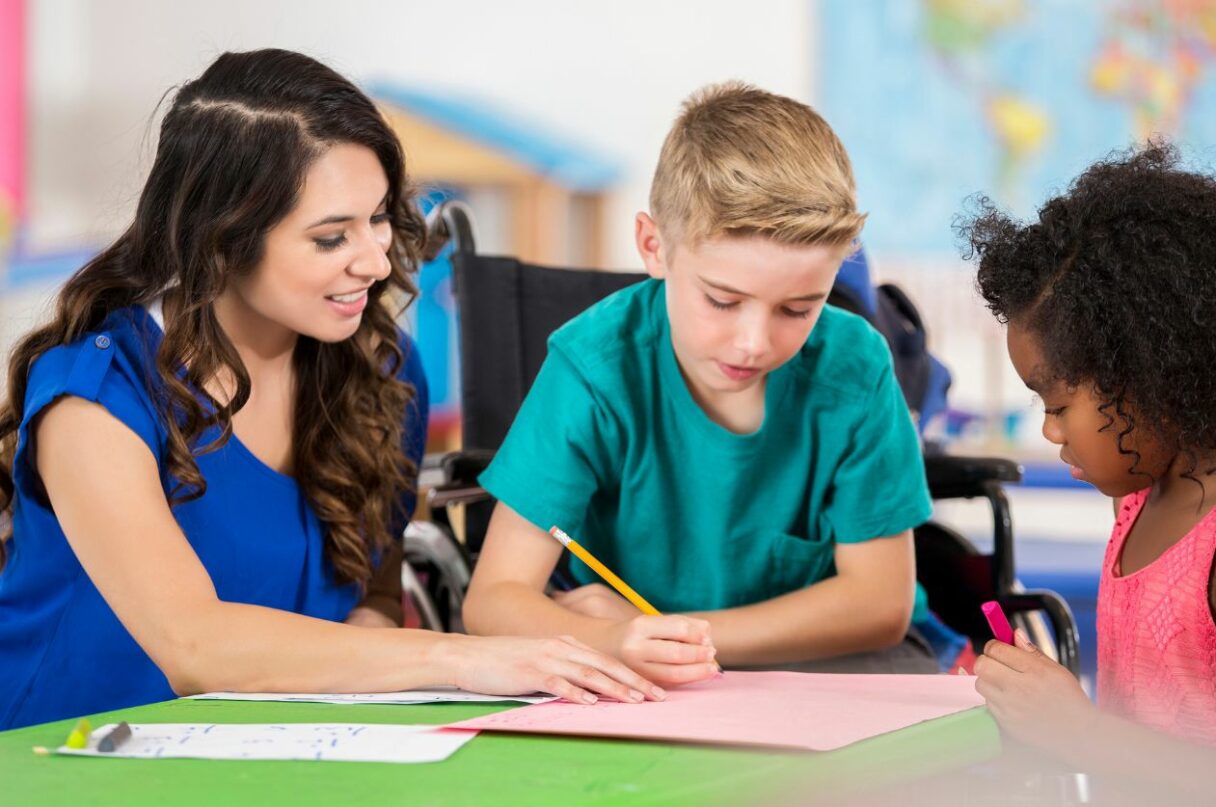Introduction
In today’s rapidly changing world, the concepts of equity and diversity have gained significant recognition and importance, particularly in the realm of education. Equity refers to the fair and just distribution of resources, opportunities, and support to ensure that every individual, regardless of their background, has an equal chance to succeed and thrive.
On the other hand, diversity encompasses the rich tapestry of human differences, including but not limited to race, ethnicity, gender, socioeconomic status, language, and abilities. Embracing equity and diversity in education is not merely an act of social justice, but also a catalyst for transformative change, fostering inclusive learning environments where all students can realize their full potential, and where society as a whole can flourish.
What is Diversity in Education?
Diversity can be defined as the differences between individuals on any attributes that may lead to the perception that another person is different from the self. It incorporates all the dimensions that make individuals unique from one another.
In an education context, diversity recognizes that students and educational professionals come from different cultural, social, and demographic backgrounds, each with their own unique strengths, needs, and contributions.
Embracing diversity in education means valuing and appreciating these differences and recognizing them as assets that enrich the learning environment and promote educational excellence.
Diversity in education plays a vital role in fostering inclusive and equitable educational environments. It encourages respect, understanding, and appreciation for different cultures, traditions, and perspectives. It helps to challenge stereotypes, biases, and prejudices, promoting cross-cultural understanding and reducing discrimination.
By creating spaces where diverse individuals can learn, collaborate, and thrive, diversity in education contributes to a more inclusive society that celebrates and respects the dignity of all individuals.
What is Equity in Education?

Equity is associated with fairness or justice in the provision of education or other benefits, and it takes individual circumstances into consideration. The guarantee of fair treatment, access, opportunity, and advancement for all and eliminate barriers that prevented the participation of all the group. Equity ensures not only that everyone has a pair of shoes but that everyone has a pair of shoes that fit.
Equity in education goes beyond mere equality, which means giving every student the same resources or support. Instead, it takes into account the unique circumstances and needs of individuals or groups, acknowledging that some students require additional support to reach their full potential. It aims to level the playing field by providing targeted resources, interventions, and opportunities to those who need them the most.
“There is nothing more unequal than the equal treatment of unequal people.”
The Importance of Culturally Responsive Teaching
Culturally responsive teaching is a vital aspect of creating an inclusive and equitable educational environment. By recognizing and valuing the diverse cultural backgrounds, experiences, and identities of students, educators can foster a sense of belonging and promote positive learning outcomes.
Culturally responsive teaching goes beyond mere acknowledgment of diversity; it involves actively incorporating students’ cultural perspectives, values, and traditions into the curriculum and instructional practices.
This approach allows students to see themselves reflected in their learning materials, making the content more relatable and engaging. Moreover, culturally responsive teaching promotes cross-cultural understanding and empathy among students, preparing them to thrive in a diverse society.
By embracing this approach, educators not only empower students from all backgrounds but also create a classroom environment that celebrates diversity and cultivates a lifelong love for learning.
Promoting Inclusive Curriculum

Promoting an inclusive curriculum is paramount in fostering a learning environment that embraces and respects the diversity of students’ backgrounds, experiences, and identities.
An inclusive curriculum goes beyond a one-size-fits-all approach and recognizes that students come from various cultural, ethnic, linguistic, and socio-economic backgrounds. It acknowledges the importance of representation, offering learning materials that reflect the experiences and contributions of diverse individuals and groups.
By incorporating diverse perspectives, histories, and cultures into the curriculum, educators can provide students with a well-rounded education that expands their worldview, encourages critical thinking, and nurtures empathy.
An inclusive curriculum empowers students by validating their identities, promoting self-esteem, and creating a sense of belonging in the classroom. By prioritizing inclusivity, educational institutions can cultivate a more equitable society and prepare students to thrive in a diverse world.
Supporting Language Learners

Supporting Language Learners (LLs) is vital in promoting diversity and equity in education. LLs face unique challenges as they navigate the educational system in a language that may not be their first. It is essential for educators to provide appropriate support and resources to help these students succeed academically and socially.
This support includes language development programs, such as Second Language classes. Additionally, educators can employ instructional strategies that promote language acquisition, such as providing visuals, using gestures, and encouraging peer collaboration.
Creating a supportive and inclusive learning environment for LLs involves recognizing and valuing their cultural and linguistic diversity. By embracing the assets and strengths that LLs bring to the classroom, educators can foster an atmosphere of acceptance and empowerment, enabling these students to fully participate and thrive in their educational journey.
To further support LLs, educators should prioritize culturally responsive teaching practices. This involves incorporating culturally relevant materials, literature, and examples that reflect the diverse backgrounds and experiences of LLs.
By integrating students’ cultural heritage and traditions into the curriculum, educators demonstrate respect and appreciation for their identities, thereby enhancing their sense of belonging and engagement in the classroom.
Building strong partnerships with LLs’ families is also essential. Communicating with parents or guardians in their native language, involving them in school activities, and seeking their input can help create a collaborative and supportive network. Parents can provide valuable insights into their child’s strengths, challenges, and cultural background, enabling educators to tailor instruction and support to meet the individual needs of LLs.
Addressing the Opportunity Gap
In the pursuit of equitable education, it is important to address the opportunity gap that exists within our educational systems. The opportunity gap refers to the unequal distribution of resources, opportunities, and outcomes among different student groups, primarily driven by factors such as race, socioeconomic status, and geographic location.
It perpetuates educational disparities, limiting the prospects and potential of marginalized students while deepening societal inequities.
One of the key aspects of addressing the opportunity gap is acknowledging and understanding its underlying causes. Socioeconomic disparities, institutional biases, and systemic inequalities all contribute to the perpetuation of the opportunity gap.
Low-income students, students of color, language learners, and students with disabilities are often disproportionately affected, facing barriers that hinder their educational progress. By recognizing these systemic issues, educators, policymakers, and communities can begin to develop targeted solutions and interventions.
One critical step in narrowing the opportunity gap is ensuring equitable access to high-quality educational resources and opportunities. This includes equitable distribution of funding, ensuring that schools in low-income communities receive adequate resources to meet the needs of their students.
It also involves providing access to advanced courses, enrichment programs, and extracurricular activities that promote academic and personal growth.
By eliminating the resource disparities that often perpetuate the opportunity gap, we can level the playing field and provide all students with the tools they need to succeed.
Overcoming Bias and Stereotypes in Education

Overcoming bias and stereotypes in education is a continuous and multifaceted endeavor that requires a deliberate commitment from educators and educational institutions. Bias, whether conscious or unconscious, can manifest in various forms, such as differential expectations, discipline disparities, or limited opportunities for certain student groups.
Recognizing and addressing these biases is the first step toward creating an inclusive and equitable learning environment. Educators must engage in self-reflection and professional development to become aware of their own biases and actively work to challenge them. This includes examining assumptions about students based on factors such as race, ethnicity, gender, socioeconomic status, or ability.
Addressing stereotypes is equally vital. Stereotypes can perpetuate misconceptions, limit opportunities, and hinder students’ academic and personal growth. Educators must challenge and debunk stereotypes by providing diverse and accurate representations of different cultures, races, genders, and abilities in the curriculum and learning materials.
This involves incorporating literature, history, and contributions from diverse perspectives to create a comprehensive and inclusive educational experience.
It is essential to foster an inclusive classroom culture that encourages open dialogue and respect for all perspectives. Teachers can create safe spaces where students feel comfortable sharing their experiences, challenging biases, and confronting stereotypes.
By promoting empathy, understanding, and appreciating diverse identities and backgrounds, educators can help dismantle harmful stereotypes and create an environment where students feel valued, validated, and empowered.
Furthermore, collaboration with families, communities, and stakeholders is important. By engaging families from diverse backgrounds in the educational process, schools can better understand the experiences and needs of their students. Involving community organizations and leaders can provide additional resources, perspectives, and support in addressing biases and stereotypes within the broader educational ecosystem.
Promoting Diversity in the Teaching Profession

A diverse teaching workforce is essential for creating inclusive and equitable educational environments. When students see teachers who reflect their backgrounds and identities, it sends a powerful message that their experiences are valued and that they, too, can pursue a career in education. Promoting diversity in the teaching profession benefits not only students from underrepresented backgrounds but also the entire educational community.
To successfully recruit a diverse teaching workforce, it is vital to address barriers that may discourage individuals from pursuing a career in education. This includes providing financial support through scholarships and grants, offering mentorship programs, and creating pathways to teacher certification that are accessible to individuals with diverse backgrounds and experiences. Furthermore, schools and districts can establish partnerships with teacher preparation programs to ensure that aspiring teachers receive training and support that is responsive to the needs of diverse student populations.
Once a diverse pool of teachers is recruited, it is equally important to prioritize retention strategies. Schools and districts should create supportive and inclusive working environments that value and celebrate the contributions of all teachers.
This can be achieved through professional development programs that promote cultural competency, provide resources for supporting diverse learners, and address implicit biases within the education system.
Additionally, mentorship and networking opportunities can help connect teachers from underrepresented backgrounds with supportive colleagues and mentors who can provide guidance and encouragement.
Conclusion
In conclusion, promoting diversity and equity in education is essential for creating inclusive, enriching, and equitable learning environments. It requires a multifaceted approach that encompasses various aspects, including culturally responsive teaching, inclusive curriculum, support for language learners, addressing the opportunity gap, and overcoming bias and stereotypes.
By embracing diversity and fostering equity in education, we can ensure that all students have equal opportunities to succeed, regardless of their backgrounds or circumstances.

